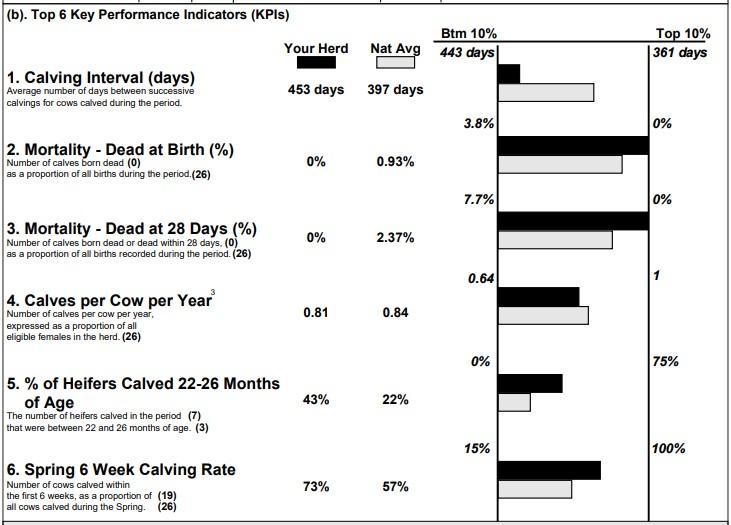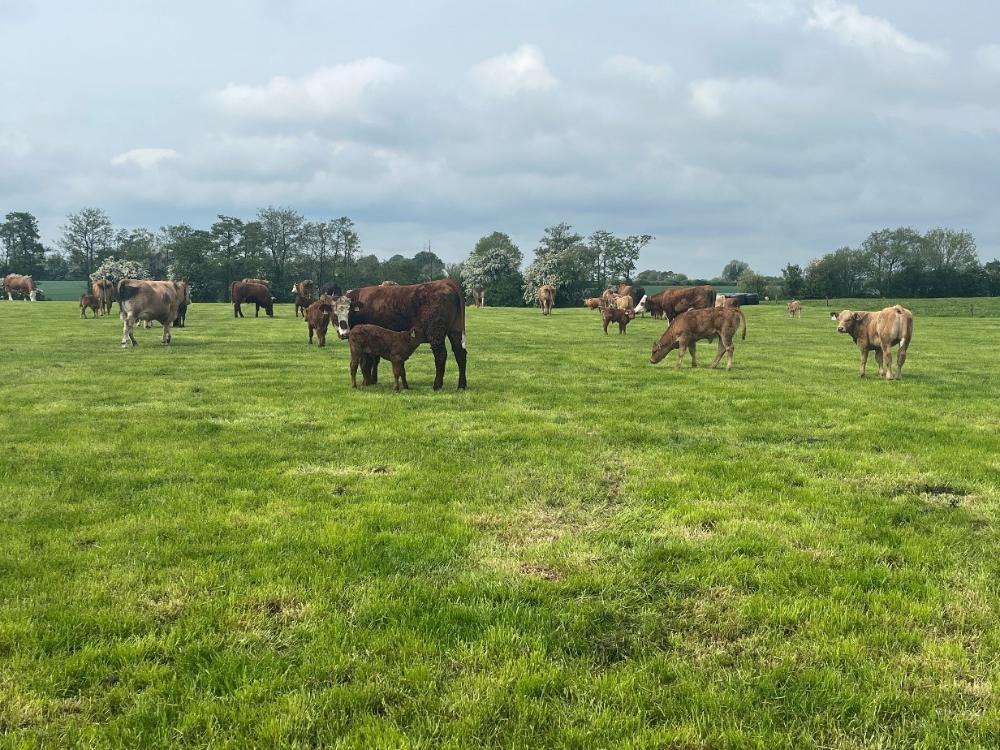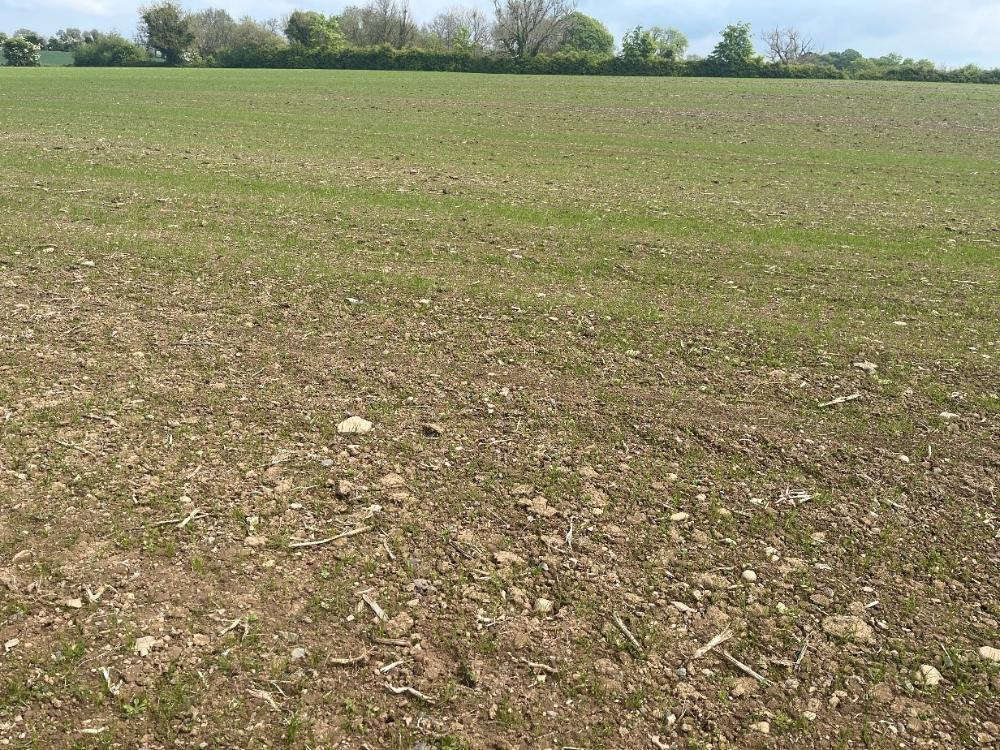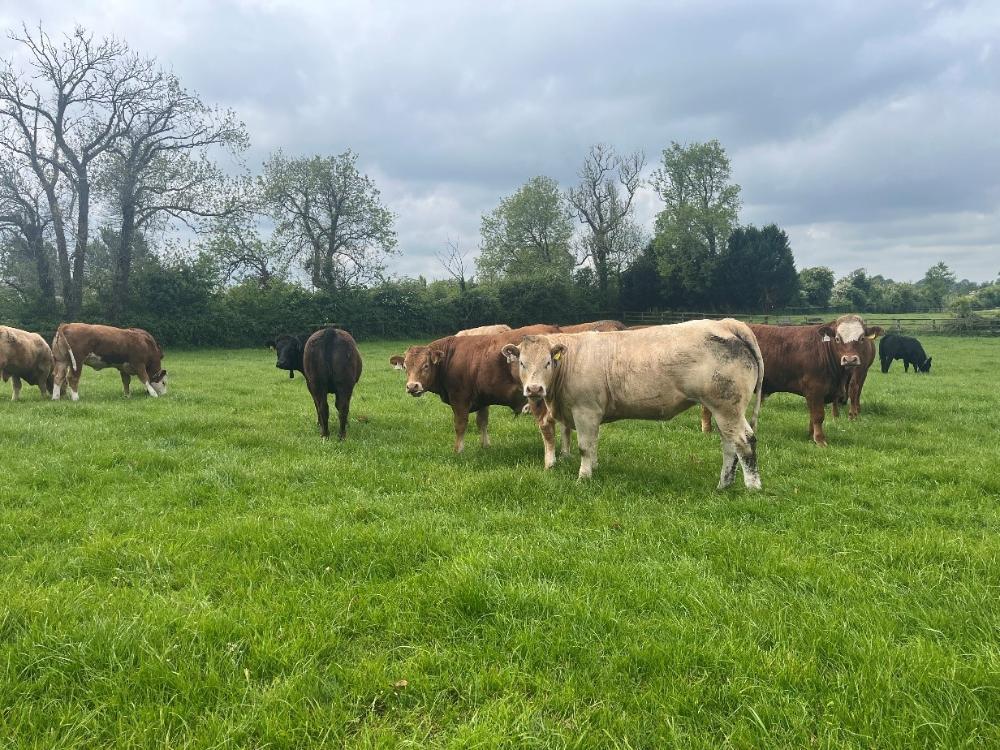Calving review & breeding progress
- Calving review 2025
- Breeding update
- Plans for later calving cows
Calving finished on Michael’s farm on 27th April and the season lasted for 13 weeks in total. 26 cows calved on the farm, and despite one caesarean section they are all alive and healthy. This has resulted in a very low mortality rate of 0% on the farm. However as Michael has changed from autumn to spring calving, the calving interval for the herd is now at 453 days but he expects to be closer to the target 365 days for 2026. The calves per cow per year has also dropped to 0.81 as a result, but Michael was fully aware that it would happen.
43% of the heifers calved at 22 to 26 months of age; some of these were his own autumn born ones which would have been over 36 months at the time of calving with the change in system. 71% of the herd calved within the first 6 weeks which Michael was very happy with.

Breeding began on 11th April and 27 out of 35 eligible females were served in the first 5 weeks. A further 2 only calved in April so Michael is very happy with the submission rates to date. The cows were slow to start showing heats, despite being on good quality grass since calving and being restrict suckled so Michael scanned a batch of them in mid-April. Two of them were given prostaglandin injections to come cycling and 7 were put on a 10 day synchronisation programme. Michael plans to synchronise the later calving cows after they are 35 days calved, if they have not started cycling before then. Only 3 cows have repeated so far.
Michael plans to finish breeding within 9 weeks (i.e. 13th of June) so he will be monitoring them closely during this time. He also plans to use short gestation bulls on the latest calving cows to help shorten the calving spread next spring.

Figure 2: Cows and calves grazing the silage ground that was cut this month
The fields with the catch crop in 2024 were reseeded on 11th April this year. Michael used a stale seedbed technique to help control weeds where he cultivated it, allowed weeds to germinate and then cultivated it again. It will be given a clover safe post-emergence spray. The field was spread with farmyard manure and is index 4 for P and K so Michael spread 1 bag/acre of 38% protected urea across it.

Figure 3: Grass seed starting to strike on the reseeded field
The grass seed contained the following varieties:
Aberswan is on the Irish recommended list for 2025, as are the grass varieties which all feature in the top 10 varieties on the Pasture Profit Index (PPI). This index gives a breakdown of the ploidy, heading date, PPI value, yield, DMD, silage yield and ground cover. Red clover varieties are not included in the Irish recommended list.

Figure 4: Top 10 grass varieties on the 2025 PPI (Source: DAFM)
Red clover and grass silage were cut on the 7th/8th of May and baled on Friday 9th May. The sugars were 6.5% at the time of cutting for the red clover silage and 3.5% for the grass silage which were on target. Michael tested them using a refractometer and they give an indication of the preservation potential of the silage. The silage yielded 5 bales/acre which Michael was happy with, and he expects the quality to be good when he tests them later in the year.
The autumn 2023 bullocks (15) were weighed on 29th April. They averaged 546kg and gained 1.43kg/day since their last weighing on 9th April.
The autumn 2023 heifers (12) averaged 482kg and gained 1.42kg/day during the same period.

Figure 5: Some of the store cattle that were weighed recently